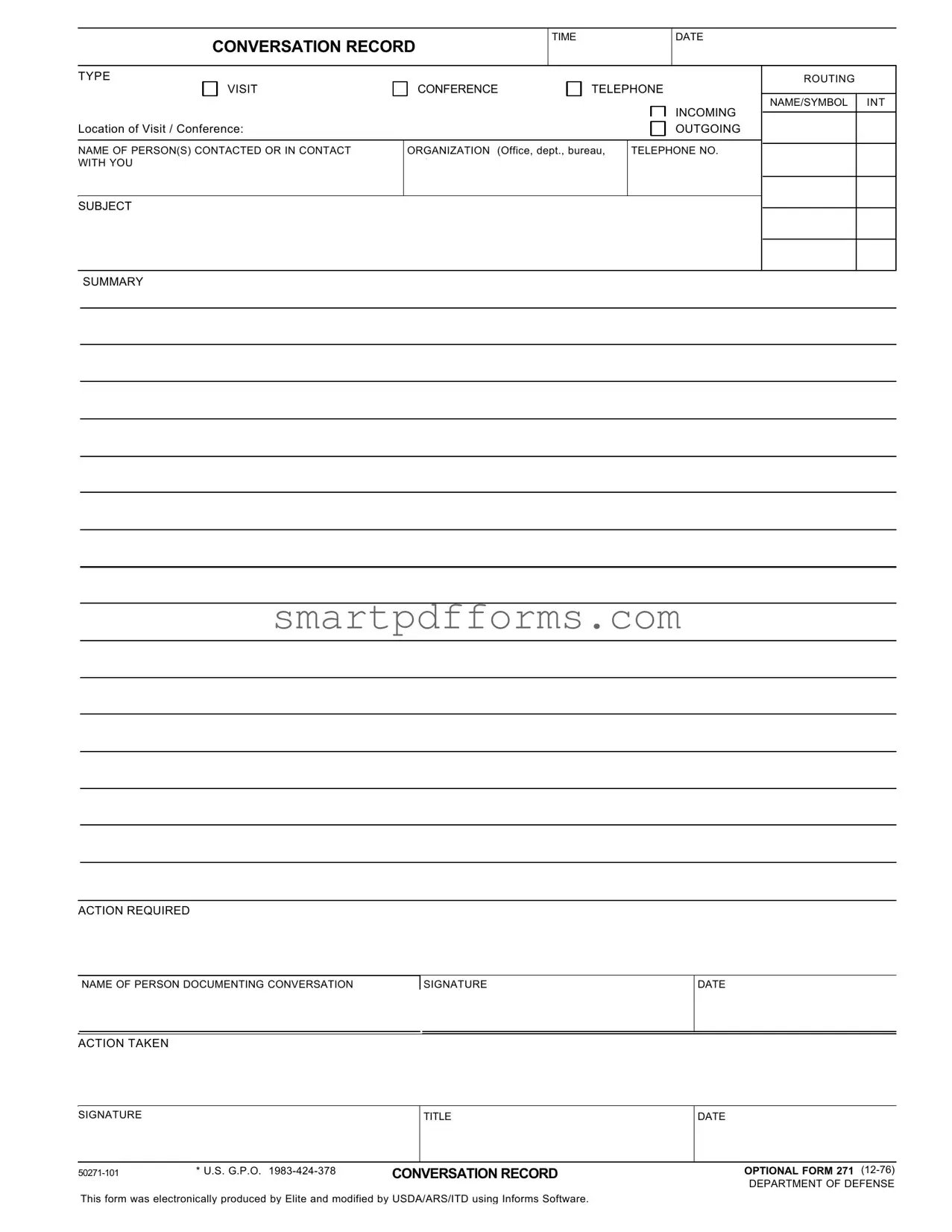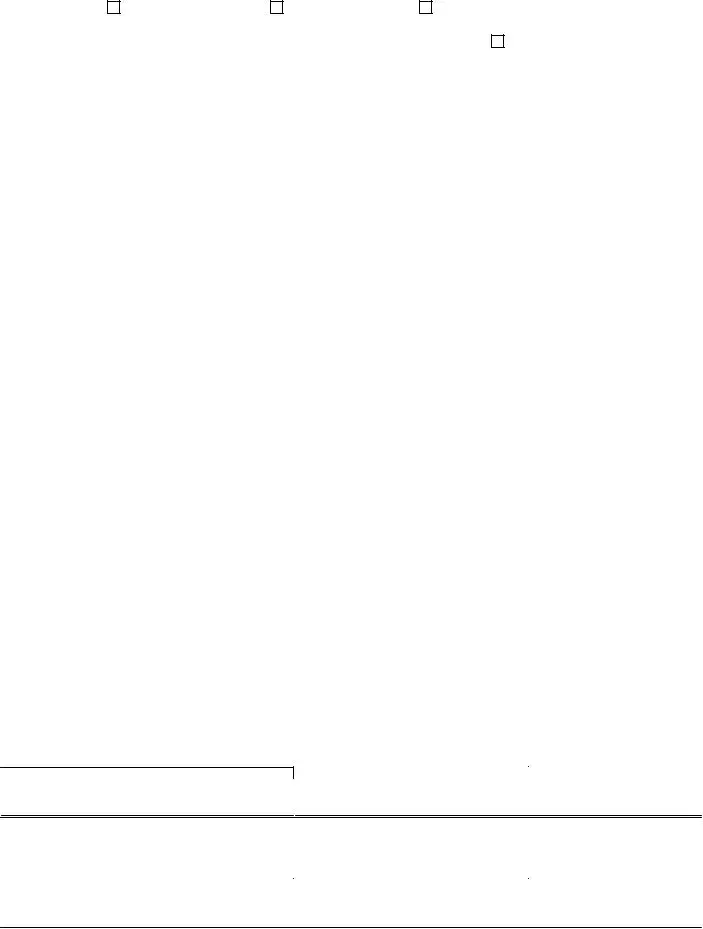Blank Optional 271 PDF Template
The Optional Form 271, or OF-271, is a standardized document used within the Department of Defense to meticulously record various types of conversations, including those that happen in person, over the phone, or via other communication channels. It captures essential details such as the time, date, participants, and a summary of the conversation, ensuring accurate documentation and accountability. For individuals required to document interactions in an official capacity, completing and submitting this form is a crucial step.
Filling out the Optional Form 271 ensures a comprehensive and official record of important conversations is maintained. Click the button below to start the process.
Make This Document Now

